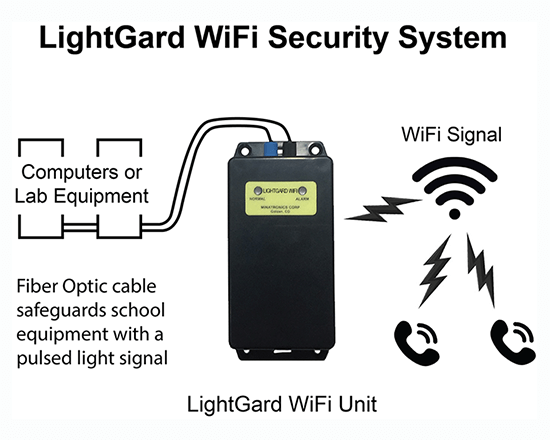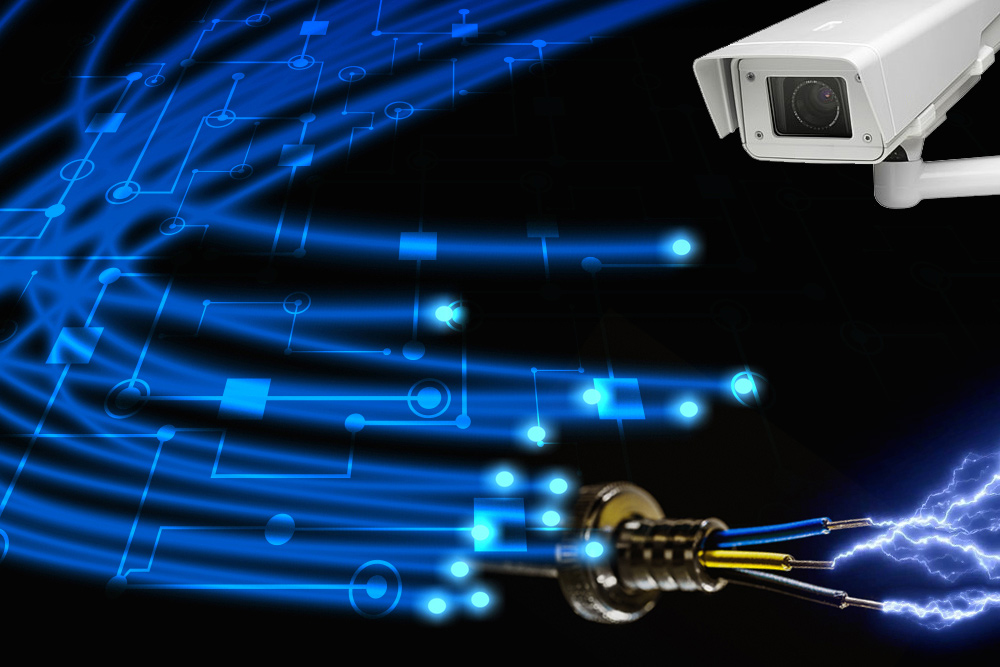Fiber Optic Security System: The Ultimate Solution for Your Property’s Protection Needs
Fiber Optic Security System: The Ultimate Solution for Your Property’s Protection Needs
Blog Article
Enhance Your Safety With Advanced Fiber Optic Safety Systems
In an age where safety is paramount, sophisticated fiber optic safety systems offer a compelling solution for boosting security throughout numerous environments. These systems not just boast remarkable bandwidth and rate for high-resolution surveillance but also use exceptional strength against outside disturbances. As companies significantly look for trusted ways to shield their properties, the integration of ingenious modern technologies like AI and IoT within fiber optic frameworks elevates essential concerns regarding their performance contrasted to conventional systems. What effects do these advancements hold for future safety and security measures?
Advantages of Fiber Optic Protection
Using the advantages of fiber optic innovation substantially enhances safety systems throughout various applications. Among the key benefits is the enhanced data transfer ability, permitting the transmission of big amounts of data at broadband. This is specifically essential for real-time video monitoring, where high-resolution feeds can be sent out without latency, making sure instant feedback capacities.
Additionally, optical fiber exhibit premium resistance to electromagnetic interference, which is vital in settings with potential signal interruptions. This integrity ensures constant efficiency in crucial safety and security operations. Moreover, fiber optic cables are less susceptible to tapping and unapproved accessibility contrasted to conventional copper wiring, thus improving information honesty and discretion.
An additional noteworthy benefit is the toughness of fiber optic systems; they are extra resistant to environmental elements such as moisture, temperature fluctuations, and harsh compounds. This durability equates to reduce maintenance prices and longer life expectancies for protection setups.
Finally, the lightweight nature of fiber optic cables assists in much easier setup and directing, especially in intricate infrastructures (fiber optic security system). Ultimately, the integration of fiber optic innovation into safety systems not just reinforces security steps yet additionally maximizes functional performance
Key Functions to Consider
When assessing fiber optic security systems, several crucial functions must be taken into consideration to ensure optimal performance and efficiency. Evaluate the system's discovery range and sensitivity; a comprehensive variety permits for keeping track of big areas, while high sensitivity ensures that even small disturbances are found immediately.
Following, take into consideration the assimilation abilities of the system. A fiber optic protection system ought to effortlessly interface with existing protection procedures such as cams and alarms, creating a natural safety and security network.
Durability and ecological resistance are likewise vital functions. Make certain that the system is created to stand up to extreme weather and prospective physical dangers, as this will extend its functional life-span.

Lastly, look into the scalability of the system. A robust fiber optic security system need to be conveniently expanding to suit future requirements without significant overhauls. By carefully considering these features, you can select a fiber optic safety service that enhances safety and security and safety and security in next page your environment.
Setup Refine Summary
To effectively execute a fiber optic safety system, a systematic installment procedure is vital. This procedure starts with a detailed site analysis to figure out the particular security demands and to identify optimum areas for fiber optic cables and safety gadgets. Following this assessment, the installment group will certainly establish a detailed strategy, consisting of cable television pathways, necessary tools, and compliance with local laws.
Next, the setup entails laying the fiber optic cables, guaranteeing they are secured from environmental variables and physical damage. Correct handling methods are important, as fiber optic cable televisions are delicate and can be conveniently damaged. After the my website cabling is installed, connectors and terminations are meticulously finished to make certain signal integrity.
The subsequent stage contains mounting safety and security gadgets such as cams, motion detectors, and alarm system systems, all incorporated with the fiber optic network. Strenuous screening is conducted to confirm that all parts are operating properly and to make certain optimum performance.

Contrasting Fiber Optic to Conventional Solutions
The development of security modern technology has resulted in considerable innovations in the contrast between fiber optic systems and standard copper-based systems. Fiber optic systems utilize light to transmit data, using premium data transfer and speed compared to their copper counterparts. This results in boosted information transmission abilities, making fiber optics ideal for high-resolution video monitoring and real-time surveillance.
Additionally, fiber optic cable televisions are immune to electro-magnetic interference, decreasing the possibility of signal destruction brought on by exterior variables. This particular makes certain constant performance, even in difficult atmospheres. In contrast, standard copper systems are a lot more prone to interference, bring about prospective susceptabilities in safety and security applications.
Resilience is an additional benefit of fiber optic systems. They are much less vulnerable to harm from environmental aspects such as dampness and temperature level changes, which can jeopardize copper circuitry. Furthermore, fiber optics are lighter and thinner, permitting for less complicated installment and minimized physical footprint.
However, conventional systems have a tendency to have lower click over here first costs, making them eye-catching for budget-conscious jobs. While fiber optic systems might call for a higher upfront investment, their long-lasting benefits-- such as lower upkeep expenses and greater reliability-- typically outweigh the initial cost, positioning them as a premium option for modern safety and security needs.
Future Patterns in Protection Modern Technology
Emerging patterns in protection technology are poised to change the landscape of surveillance and risk discovery - fiber optic security system. As organizations increasingly deal with innovative risks, innovations such as fabricated intelligence (AI) and device understanding (ML) are coming to be indispensable to protection systems. These innovations enhance the ability of fiber optic systems by allowing real-time information analysis, determining abnormalities, and automating responses to prospective violations
In addition, the integration of the Internet of Things (IoT) is changing protection structures. IoT tools can supply thorough situational recognition and assist in smooth interaction in between various protection parts. This interconnectedness permits for a lot more reliable monitoring and faster occurrence action times.
Biometric authentication is also getting energy, providing a greater level of safety and security through one-of-a-kind physical qualities. As this technology progresses, it is most likely to be included right into fiber optic systems for boosted gain access to control.
Conclusion
Finally, progressed fiber optic security systems represent a significant innovation in security and surveillance innovation. Their premium transmission capacity, resistance to disturbance, and toughness facilitate trustworthy surveillance and data honesty. As these systems incorporate AI and IoT abilities, they enhance the total safety and security structure, ensuring durable protection for assets. The change from traditional systems to fiber optic services reflects a growing pattern in the direction of a lot more reliable and effective safety measures in a progressively complex technical landscape.
Report this page